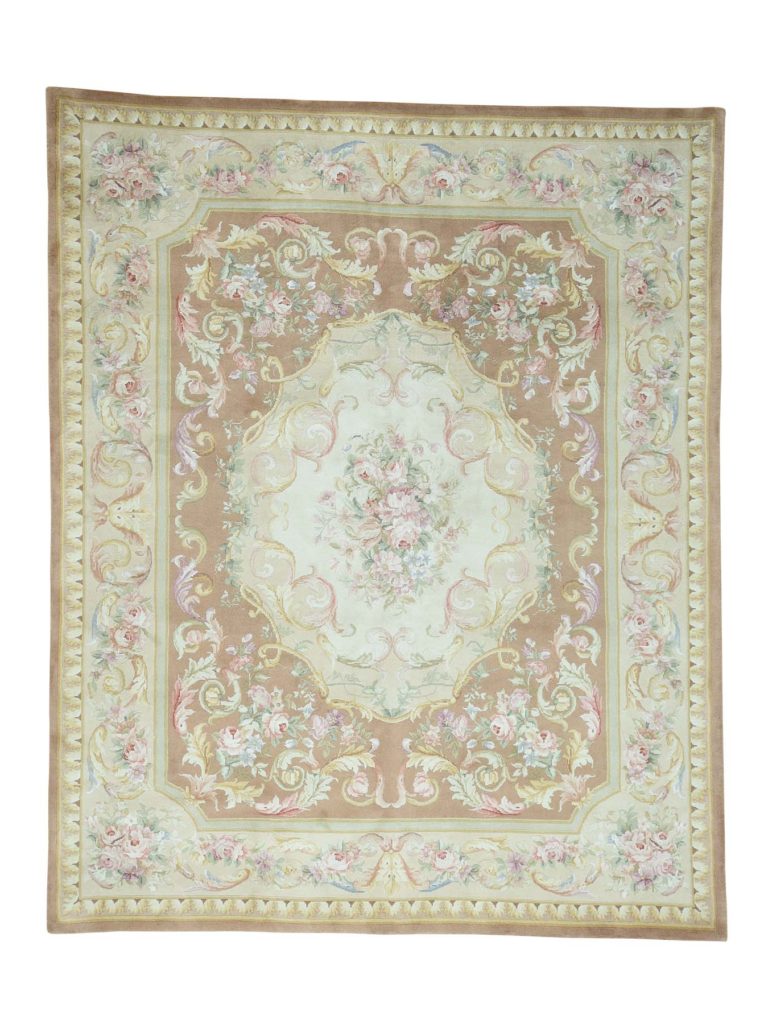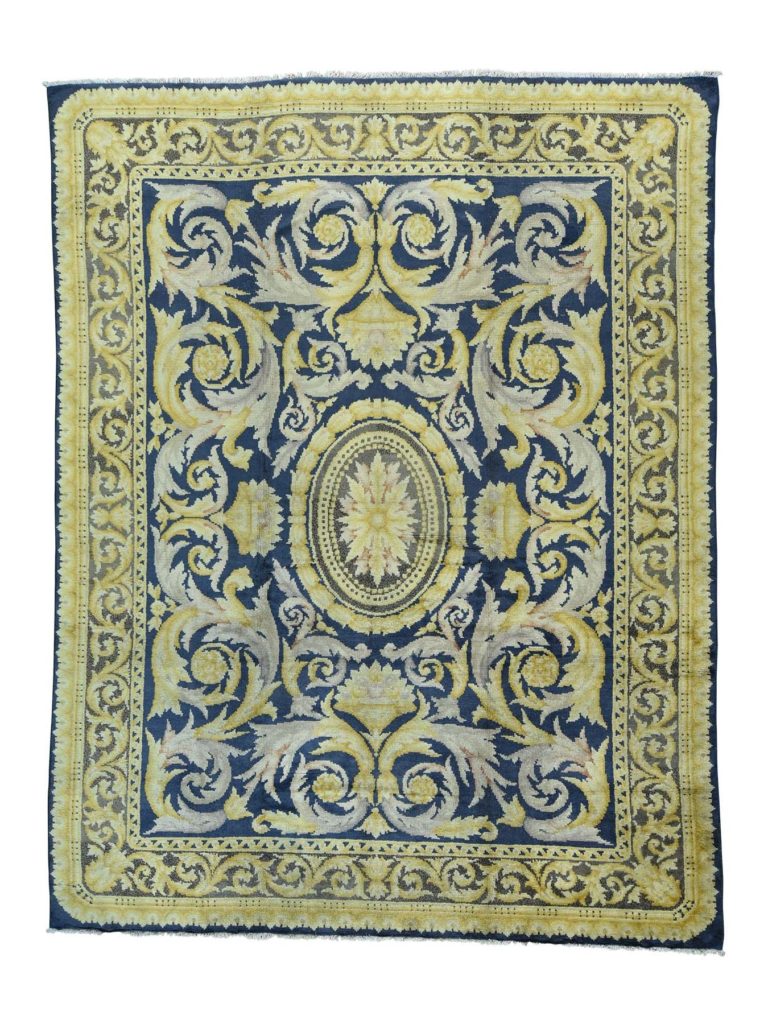
Savonnerie Rugs
Savonnerie Carpets
France was faced with a very modern problem in the early 17th century. A crippling trade deficit, partly due to luxury goods coming from Turkey and India, namely ortiental carpets. So King Henry IV (d.1610) and his finance minister Maximillian de Bethune decided to establish workshops for carpets ‘de Turquie et facon de levant’, meaning symmetrically piled rugs, to be woven in France.

Beginning in 1608 directly beneath the Grand Gallery in the Louvre, carpets were woven mainly for the Royal household, and as precious gifts, under the supervision of Monsieur Piere Dupont. In 1615, Henry’s widow, Marie de Medici, established another workshop at Chaillot, just outside Paris, in a former soap (French: savon) factory that at the time housed orphans and provided cheap labour for weaving rugs. This weaving workshop was run by another family of weavers, the Lourdets, resulting in a sometimes bitter rivalry between the two weaving concerns.
Marie’s son Louis XIII (r.1610-1643) gave his name to the style of first period Savonnerie carpets. It is characterised by an exuberance of flowers in baskets, in vases, flowing out of cornucopia, and in bouquets. They are all very naturalistic in their drawing, and are related to contemporary Dutch embroidered and tapestry woven table covers and other smaller domestic textiles, which were much in demand throughout Europe.
By the 1660s. the Savonnerie production had developed a very specific weaving structure that sets it apart from other/later French and European carpets with the symmetrical knot. Two wefts shoots, one sinuous one taut, keep two warps, of which is one fully depressed, apart. The back of a real Savonnerie is therefore strongly ribbed, unlike a later Beauvais rug which shows a flat surface on the reverse. The other distinct feature is the coloured warps in the otherwise natural coloured foundation. Every tenth warp is dyed (brown, blue or green) to help the weaver to follow the cartoon more exactly. Hemp is used for the foundation (some later examples have wool wefts) and the pile is nearly always wool.
Under Louis XIV (r.1643-1715) the style shows a significant change towards the baroque. Louis XIV and his minister Colbert renovated the Louvre, and their modernisation included carpets for all state rooms, which was previously unheard of. What immediately springs to mind when seeing the carpets are baroque ceiling decorations: their general layout, the borders, scrolls, acanthus leaves and even the ‘pictures’ within the carpets. From the second half of the 16th century onwards all Savonnerie carpets were designed by painters, prominent among them Charles le Brun, first painter to the King.

Producing such a significant number of huge carpets proved difficult to achieve in a short period. To speed up production, several of the Louvre carpets were woven on short warps, meaning the rug was woven horizontally, at right angles to the design in the manner of French and Flemish tapestry weaving, which allowed more weavers to work simultaneously on one piece. Production began in 1665 and during the next twenty years almost one hundred carpets in sizes up to 9 metres long and 5 metres wide were woven. Not all were installed in the Louvre, however, as Louis XIV had abandoned the ‘old’ palace for the even newer Versailles.
In the 18th century under Louis XV, carpet designs took a more playful turn, less stately, more domestic, late baroque in transition to towards early rococo. They are still relatable to stucco ceilings of the same period. The most prominent designer of the time was Pierre-Joseph Perrot.
Neoclassical designs start to appear in the second half of the 18th century with carpets designed by Francois-Joseph Belanger, whose work was continued by Michel -Bruno Bellengé, Louis XVI’s principal designer and ‘Peintre du Roi’. First in the Louvre but later directly in the Savonnerie workshop he designed, among many others, a carpet for Marie Antoinette’s palace in Fontainebleau. His carpets were copied in Beauvais.
The French Revolution bought a brief interruption at the Savonnerie workshops, but under Napoleon Neoclassical designs turned into a fully developed imperial, ‘Empire’, style. The most important designer was Jacques-Louis de La Hamayde de Saint-Ange-Desmaisons, known as Saint-Ange. He continued to design carpets, as well as porcelain and tapestries, well into the Bourbon restoration. Pile carpet production was moved to the Gobelins manufacturory in 1826, and the use of coloured warp pairs was discontinued.
Other European carpets are often erroneously called Savonnerie, but only those ones with the structural characteristics mentioned above can be called real Savonneries.